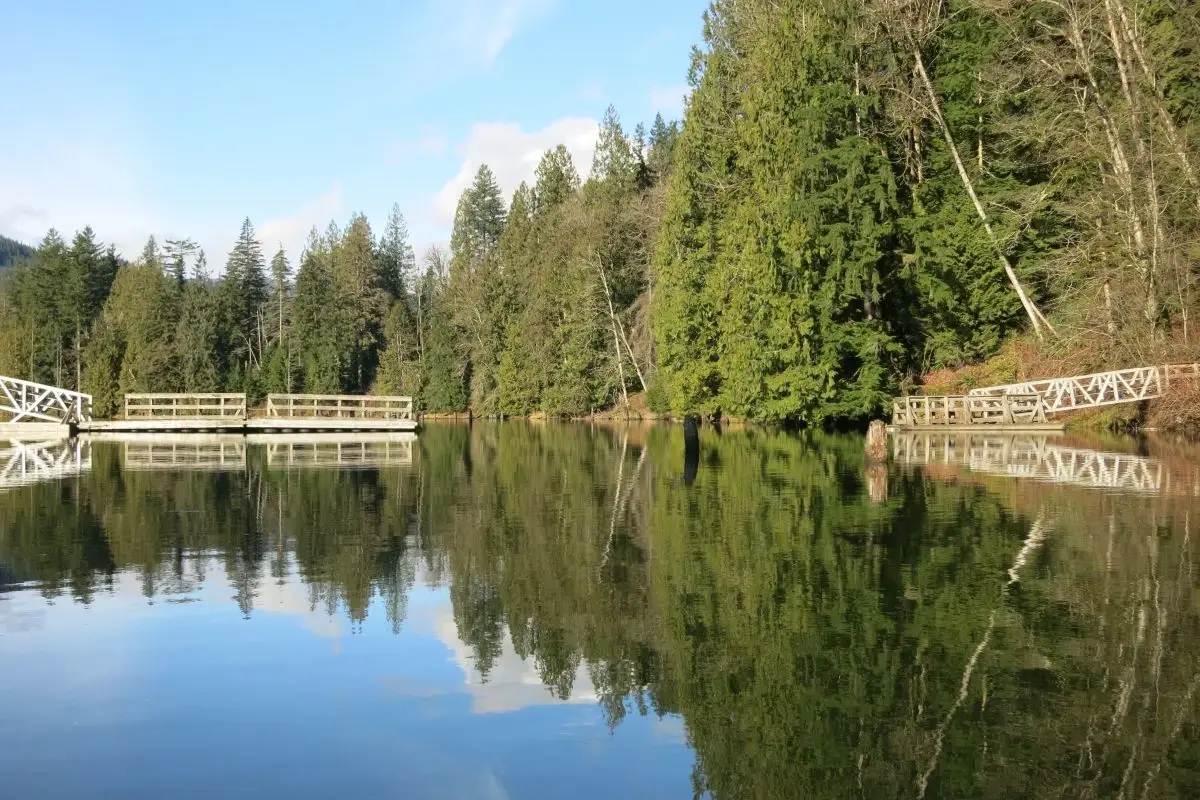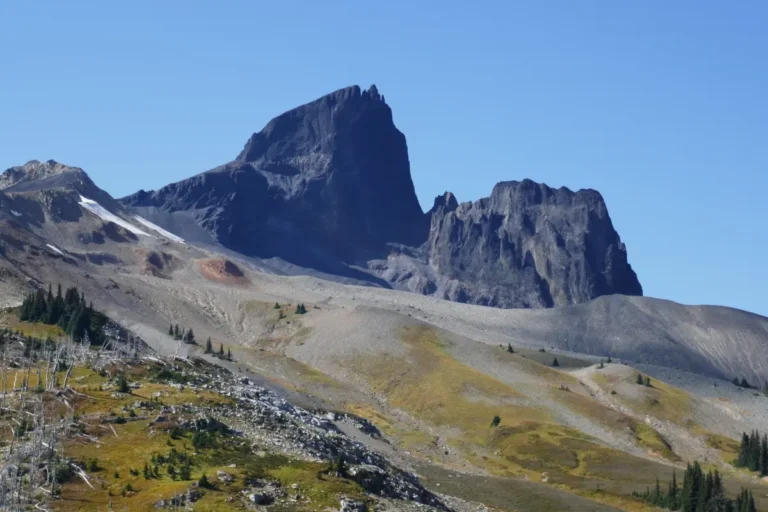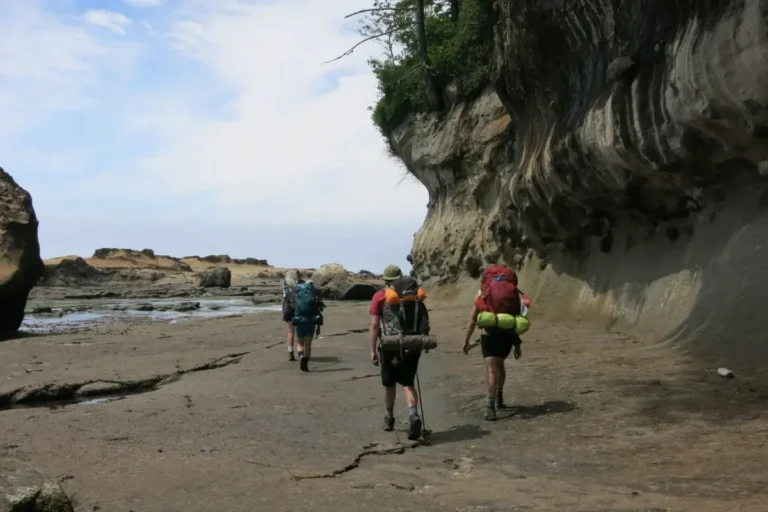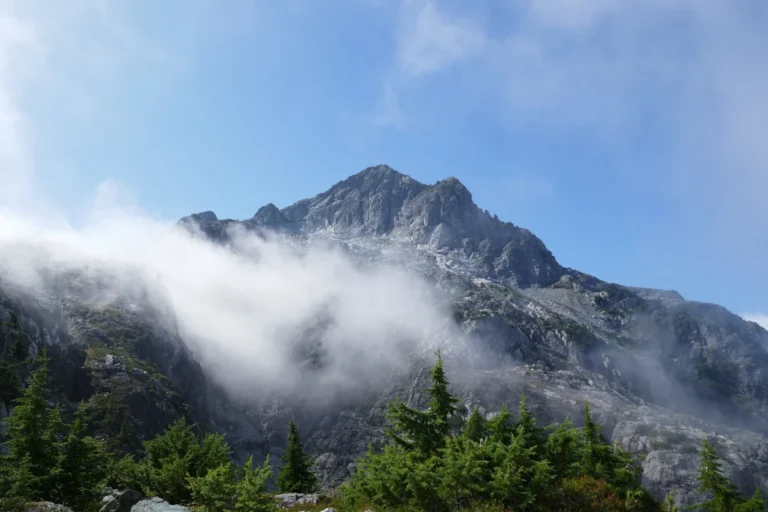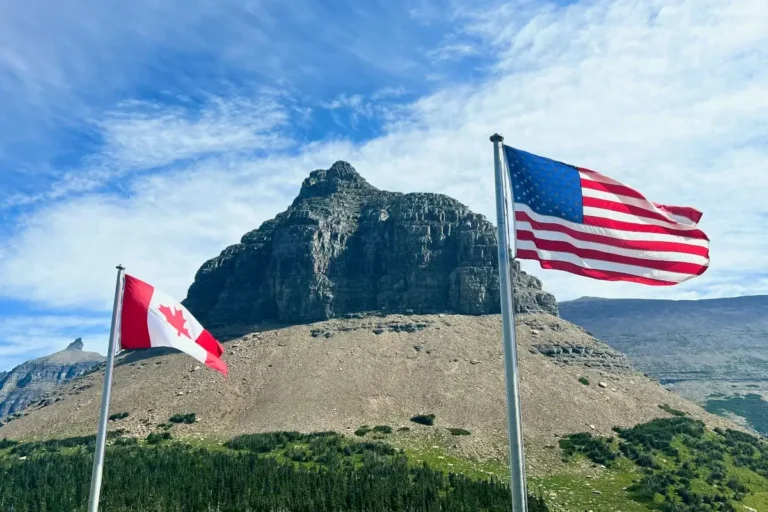The Case of Hayward Lake’s Missing Floating Bridge
Hayward Lake, once a part of the Stave River, lies nestled between two hydroelectric dams, with the Ruskin Dam having created it. Located northwest of Mission, the lake is a popular swimming and recreation area in the summer, with two swimming beaches, a dog beach, trails, and a picnic area.
On the east side of the lake lies an old rail grade that once helped to build the Ruskin and Blind Sough Dams. Known as the Railway Trail, this easy-grade, bike-accessible, mostly flat trail extends 6 km along the lakeshore. The Reservoir Trail, winding 10 km through second-growth forest along the west side of the lake, is a more rugged style hiking trail that boasts a side trail to Steelhead Falls and a floating bridge across Hairsine Inlet. Together with sections of Hayward St and Dewdney Trunk Rd, they form an 18 km loop around Hayward Lake. When complete, the trail is one of, if not the longest, continuous trail in the Fraser Valley.
The building of the Hayward Lake Loop was a joint project between BC Hydro and the City of Mission, whose forestry department manages the 4 km of the Reservoir Trail located within the Mission Municipal Forest. Construction began in 1997 and was funded through Forest Renewal BC, with the total cost reaching into the hundreds of thousands of dollars. The trail opened in 1999 and quickly became popular with locals and visitors.
BC Hydro’s trail standards are high, perhaps even surpassing some of Canada’s National Parks. This is noticeable when hiking the Reservoir Trail, where there is an distinct change in style between where BC Hydro’s well-maintained portion and the City of Mission’s more natural, rugged section. The trail is truly the best of both worlds, with an easy, groomed grade for visitors interested in a shorter walk to the falls, and a more challenging portion for those wanting a proper hike.
In 2011, it was announced that the Ruskin Dam, built in 1930, would undergo seismic upgrades to prevent collapse during a major earthquake. The work began in 2012 and was projected to be completed in 2018. As a part of this project, public access to the work site was restricted for safety reasons. This included closing part of Hayward Street and decommissioning the floating bridge across Hairsine Inlet on Hayward Lake.
Following the Ruskin Dam Project, pieces of the floating bridge left anchored along the shoreline were found to be in poor condition, leaving the trail incomplete. It’s important to note that even without the construction project, a replacement would have been needed regardless due to the bridge’s exposure to the elements.
Replacing a floating bridge, it turns out, is a much more complicated process than many might realize. Early on after the completion of the dam project, following an email campaign by local trail users, BC Hydro announced that the floating bridge replacement would be put out for tender, with work expected to begin the following autumn. However, autumn passed without construction starting, and by early 2020, it was communicated that further steps, including obtaining a License of Occupation and completing consultation with First Nations, were still underway, leading to a delay of about a year.
As time passed and the inlet remain unbridged, concerns began to grow amongst some trail users about whether the project would proceed at all. Like many other things, it was impacted by the global pandemic. In response to the delay, a local trail user launched a petition to emphasize the community’s continued interest in seeing the bridge replaced. Some members of the public worried that it would not be replaced at all, but despite the delays, the project had not been forgotten.
In 2023, news came that the project was moving forward again, with survey work underway and a target completion date set for autumn 2024. The announcement was met with a mix of excitement and cautious optimism among local trail users, some of whom had already taken matters into their own hands and bushwhacked an unauthorized route around Hairsine Inlet.
In autumn 2024, significant trail work began on both the Hayward Lake Loop. Both trails had suffered landslides during atmospheric river events in the autumn of 2021, and several smaller bridges on the Reservoir Trail were in need of replacement as well. In keeping with their high trail standards, the repairs were top of the line, featuring packed earthen steps, brand-new wooden bridges with steel stringers, improved drainage, and new trail sections rerouting around slide areas.
Despite the trail getting some much-needed love, rumours circled that the floating bridge was never going to be replaced. However the Government of Canada’s Open Science and Data Platform confirmed that the Hairsine Bridge replacement was very much on its way. This fact was proven true when the new floating bridge arrived in the parking lot of the Hayward Lake Recreation Area. Though not yet installed, the presence of it can assure trail users that the final piece of the loop will indeed return.
Given that some of the area around the lake is susceptible to landslides and a significant presence of First Nations archaeological sites in the Fraser Valley are found around waterways, due process is necessary, even if it does take time. Throw a pandemic and a catastrophic atmospheric river event into the mix, and one can begin to see why things can take a bit longer than expected to complete.
Trails remain one of the few forms of recreation that are entirely free, and access to nature is incredibly important for human health. Yet, as many know, if trails were profitable, we’d have more of them. With a growing population, trails are one part of community infrastructure that have lagged behind, making it important to preserve and maintain existing ones. Building new trails legally is a complicated process with a ton of red tape and an even larger price tag, and unauthorized trail-building carries steep penalties, including potential fines and jail time. It’s much harder to build a new trail than it is to maintain an existing one, but even maintaining the existing ones can be time-consuming and complex, as the Hairsine Bridge Project shows.
Patient local trail users can now rest assured that the new bridge is progressing. More information on the project can be found here and here.
